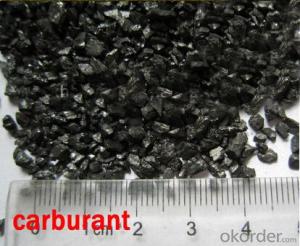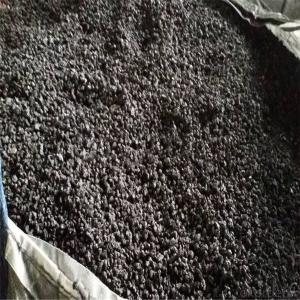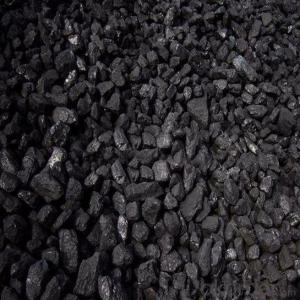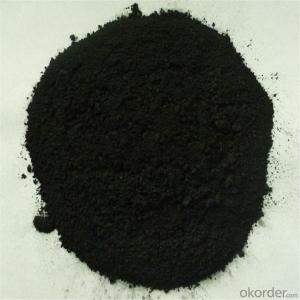FC 90 95 99% carbon raiser for steel making graphite based petroleum coke recarburizer
- Loading Port:
- Dalian
- Payment Terms:
- TT OR LC
- Min Order Qty:
- 10 m.t
- Supply Capability:
- 500000 m.t/month
OKorder Service Pledge
OKorder Financial Service
You Might Also Like
Specifications of Carbon Raiser:
- F.C 90-95%
- Low sulfur
- ISO 9001
- Calcined petroleum coke
FC 90-95-99% carbon raiser for steelmaking/Calcined anthracite / graphite based / petroleum coke recarburizer
Recarburizer carbon rasier points steelmaking recarburizer (People's Republic of China ferrous metallurgy industry standards, YB / T 192-2001 steelmaking recarburizer) and cast iron with carbon agent, and other materials are also useful to add carbon rasier such as brake pads with additives, as friction materials. carbon rasier belong plus steel, iron by carbon materials. carbon rasier quality is essential for the production of high-quality steel auxiliary additives.
Carbon rasier there are a variety of raw materials, production processes are different, there are wood carbons, carbon-based coal, coke, graphite, etc., of which there are many small species under various categories. High quality carbon agent generally refers to after graphitized carbon agent under high temperature conditions, the arrangement of carbon atoms in graphite morphology was, so called graphitization. Graphitization can reduce the content of impurities recarburiser improve recarburizer carbon content and reduce sulfur content.
Recarburizer Features:
- Medium particle size, porosity, large, absorption speed.
- Using petroleum coke firing temperature, the chemical composition of pure carbon, sulfur, harmful ingredients minimal absorption rate.
- Product good degree of graphitization, improve the original form of liquid iron nuclear capability. Ductile iron ball to increase the number of ink in breeding, increasing the graphite furnace liquid iron nuclei. Refined, uniform distribution of the graphite in the cast.
- excellent performance and stability.
Specifications (%): | ||||||
Grade | F.C | Ash | V.M | Moisture | S | Size |
CR-95 | ≥95 | <4 | <1 | <1 | <0.3 | 0-30mm |
CR-94 | ≥94 | <4 | <1 | <1 | <0.3 | |
CR-93 | ≥93 | <6 | <1 | <1 | <0.4 | |
CR-92 | ≥92 | <7 | <1 | <1 | <0.4 | |
CR-91 | ≥91 | <8 | <1 | <1 | <0.4 | |
CR-90 | ≥90 | <8.5 | <1.5 | <2 | <0.4 | |
Carbon rasier Packing:
- Carbon rasier waterproof bags 25KG / bag, plus tons of bags or trays
- Also provide suitable package according to your needs.
- Q:How does carbon contribute to the strength of concrete?
- Carbon contributes to the strength of concrete by reinforcing it through the formation of calcium silicate hydrate (C-S-H) gel. This gel fills in the gaps in the concrete matrix, enhancing its density and reducing porosity. Additionally, the carbonaceous material reacts with calcium hydroxide (a byproduct of cement hydration), producing calcium carbonate. The formation of calcium carbonate increases the overall strength and durability of the concrete structure.
- Q:How is carbon stored in the Earth's crust?
- Carbon is stored in the Earth's crust in various forms and geological processes. One primary way carbon is stored is through the formation of sedimentary rocks such as limestone, dolomite, and chalk. These rocks are primarily composed of calcium carbonate, which is derived from the shells and skeletons of marine organisms that lived millions of years ago. Over time, these remains accumulate on the ocean floor and are compacted and cemented to form sedimentary rocks, effectively trapping carbon within them. Another way carbon is stored in the Earth's crust is through the process of carbonation. Carbon dioxide (CO2) from the atmosphere can dissolve in water and react with certain minerals such as basalt, forming carbonate minerals like calcite or magnesite. This process occurs naturally through chemical weathering and volcanic activity, and it helps sequester carbon within the Earth's crust. Additionally, organic carbon is stored in the form of fossil fuels such as coal, oil, and natural gas. These fossil fuels are the remains of ancient plants and microorganisms that lived and died millions of years ago. Over time, the organic matter is buried and subjected to high pressure and temperature, undergoing a process called diagenesis, which eventually converts it into fossil fuels. These deposits act as reservoirs of carbon in the Earth's crust. Overall, the Earth's crust acts as a significant carbon sink, effectively storing carbon through various processes such as the formation of sedimentary rocks, carbonation, and the accumulation of fossil fuels. However, it is important to note that human activities, particularly the burning of fossil fuels, are releasing substantial amounts of stored carbon into the atmosphere, contributing to global climate change.
- Q:What is carbon coffee fiber?
- Its main functions are bacteriostasis, deodorization, divergence of negative ions and anti ultraviolet rays.
- Q:What are the consequences of increased carbon emissions on indigenous communities?
- Increased carbon emissions have severe consequences on indigenous communities. One of the most immediate impacts is the degradation of their traditional lands and natural resources. Carbon emissions contribute to global warming, leading to rising temperatures, changing weather patterns, and more frequent and intense natural disasters such as hurricanes, droughts, and wildfires. These events can destroy crops, damage infrastructure, and displace indigenous peoples from their ancestral territories. Moreover, carbon emissions contribute to air pollution, which disproportionately affects indigenous communities who often live near industrial facilities and are exposed to higher levels of toxic pollutants. This can lead to respiratory illnesses, cardiovascular diseases, and other health issues, exacerbating existing health disparities. The loss of biodiversity caused by climate change also affects indigenous communities who rely on traditional knowledge and practices for sustainable resource management. Changes in ecosystems disrupt the availability and abundance of food, water, and medicinal plants, undermining indigenous cultures and traditional livelihoods. Furthermore, many indigenous communities are highly dependent on natural resources for economic development, such as fishing, hunting, and agriculture. With increased carbon emissions, these resources become scarcer and less reliable, posing economic challenges and creating financial insecurity for indigenous communities. In addition to these environmental and economic consequences, increased carbon emissions also contribute to the loss of cultural heritage and identity. Indigenous communities have a deep connection to their territories and the natural world, which is threatened by the impacts of climate change. This loss of cultural heritage is not only detrimental to indigenous communities but also to humanity as a whole, as it diminishes the diversity of human knowledge and perspectives. Overall, the consequences of increased carbon emissions on indigenous communities are wide-ranging and severe. They not only undermine their traditional lands, resources, and health but also erode their cultural heritage and identity. Recognizing and addressing these impacts is crucial to ensure the protection and well-being of indigenous communities and to mitigate the effects of climate change on a global scale.
- Q:How does carbon impact the availability of natural resources?
- The availability of natural resources is significantly impacted by carbon dioxide (CO2), which is a form of carbon. When fossil fuels like coal, oil, and natural gas are burned, they release large amounts of CO2 into the atmosphere. This excessive release of CO2 is responsible for the greenhouse effect, which leads to global warming and climate change. Climate change has a major effect on natural habitats and ecosystems. It directly affects the availability of various natural resources by causing rising temperatures and changing weather patterns. For example, higher temperatures can result in the melting of glaciers and ice caps, which affects the availability of freshwater resources for human consumption and agriculture. Furthermore, carbon emissions contribute to the acidification of oceans, which harms marine life. Coral reefs, for instance, are highly sensitive to changes in water chemistry. Increased acidity due to elevated CO2 levels can bleach and eventually kill coral reefs. This not only impacts ocean biodiversity but also affects the availability of fish and other seafood resources that many communities depend on. Moreover, climate change caused by carbon emissions disrupts ecosystems and leads to the extinction or displacement of numerous plant and animal species. This has cascading effects on the availability of resources like timber, medicinal plants, and other valuable natural products sourced from forests and other ecosystems. In addition, carbon emissions contribute to air pollution, which has adverse effects on human health. High concentrations of airborne pollutants, including particulate matter, can cause respiratory diseases and other health issues. This strains healthcare systems and reduces the productivity and overall well-being of communities. To mitigate the negative impacts of carbon emissions on the availability of natural resources, it is crucial to transition to cleaner and more sustainable energy sources, such as renewable energy. This shift would reduce reliance on fossil fuels and subsequently decrease carbon emissions, thus helping preserve and protect our natural resources for future generations.
- Q:How do fossil fuels release carbon dioxide when burned?
- By burning fossil fuels, carbon dioxide (CO2) is released as a byproduct. This occurrence is a result of the chemical makeup of fossil fuels. Fossil fuels, including coal, oil, and natural gas, primarily consist of hydrocarbons, which are compounds made up of carbon and hydrogen atoms. During the process of combustion, these hydrocarbons undergo a reaction with oxygen (O2) present in the air, leading to the production of carbon dioxide and water vapor. The chemical equation for the combustion of a hydrocarbon fuel, like the octane found in gasoline, can be represented as follows: C8H18 + 12.5O2 → 8CO2 + 9H2O In this reaction, each molecule of octane (C8H18) combines with 12.5 molecules of oxygen (O2) to yield 8 molecules of carbon dioxide (CO2) and 9 molecules of water (H2O). The carbon atoms contained within the hydrocarbons of fossil fuels bond with oxygen to create carbon dioxide. This release of carbon dioxide into the atmosphere is what contributes to the greenhouse effect and global warming. The combustion of fossil fuels serves as a significant source of anthropogenic (human-caused) carbon dioxide emissions, making up a substantial portion of the greenhouse gases discharged into the atmosphere. It is important to acknowledge that the burning of fossil fuels also results in the release of other harmful pollutants, such as sulfur dioxide (SO2) and nitrogen oxides (NOx), which have detrimental effects on air quality and human health. To address the adverse impacts of fossil fuel combustion, endeavors are underway to develop cleaner and more sustainable sources of energy, such as renewable energy, in order to diminish our reliance on fossil fuels and decrease carbon dioxide emissions.
- Q:What is carbon footprint labeling?
- Carbon footprint labeling is a system that provides information about the carbon emissions associated with a product or service. It aims to educate consumers about the environmental impact of their purchases and enable them to make more sustainable choices. The labeling typically includes a measure of the greenhouse gas emissions produced during the entire life cycle of a product, including its production, transportation, and disposal. This allows consumers to compare the carbon footprints of different products and make informed decisions based on their environmental values. Carbon footprint labeling is an important tool in promoting sustainability and encouraging businesses to reduce their emissions. It also raises awareness about the impact of individual consumption choices on climate change and encourages a shift towards more environmentally friendly alternatives.
- Q:What are the consequences of increased carbon emissions on human migration patterns?
- Increased carbon emissions have significant consequences on human migration patterns. One of the most prominent effects is the exacerbation of climate change, leading to more frequent and intense natural disasters such as hurricanes, floods, and droughts. These extreme weather events can devastate communities, destroy infrastructure, and disrupt livelihoods, forcing people to migrate in search of safer and more stable environments. Rising sea levels, another consequence of carbon emissions, pose a significant threat to coastal regions and island nations. As sea levels continue to rise, low-lying areas become more prone to flooding and coastal erosion, making them uninhabitable. This displacement of populations, commonly referred to as climate refugees, can lead to mass migrations, putting additional strain on resources and infrastructure in destination areas. Moreover, carbon emissions contribute to changes in temperature and precipitation patterns, which can have a profound impact on agricultural activities. Shifts in growing seasons, increased frequency of droughts or floods, and the spread of pests and diseases can negatively affect crop yields and food security. This disruption in the availability of food and resources can push vulnerable populations to migrate in search of better livelihoods and food sources. The consequences of increased carbon emissions on human migration patterns also extend to health issues. Climate change can lead to the spread of diseases, such as malaria and dengue fever, as well as worsen air pollution, exacerbating respiratory problems. These health risks can force individuals and communities to relocate to areas with better healthcare infrastructure and conditions. In summary, increased carbon emissions have wide-ranging consequences on human migration patterns. The intensification of climate change, rising sea levels, disruptions to agriculture, and health risks all contribute to the displacement of populations, creating a need for individuals and communities to seek safer and more stable environments. Addressing carbon emissions and mitigating climate change is essential to minimize the negative impacts on human migration and ensure a sustainable future.
- Q:Why use carbon batteries for alarm clocks?
- Look at your clock is what kind of, some nickel battery (batteries) can also be a bit expensive. Lithium battery. And what in fact almost never mind, as long as you start voltage alarm on the line.
- Q:What is the concept of carbon neutrality?
- Carbon neutrality is the idea that an entity, whether it be an individual, organization, or even a whole country, has achieved a balance between the amount of carbon dioxide emissions they produce and the amount they offset or remove from the atmosphere. It is essentially a state where the net carbon emissions are zero, indicating that the entity is not contributing to the increase in greenhouse gases and climate change. Achieving carbon neutrality often involves reducing emissions through sustainable practices and technologies, as well as investing in carbon offset projects or utilizing carbon capture and storage methods.
1. Manufacturer Overview |
|
|---|---|
| Location | |
| Year Established | |
| Annual Output Value | |
| Main Markets | |
| Company Certifications | |
2. Manufacturer Certificates |
|
|---|---|
| a) Certification Name | |
| Range | |
| Reference | |
| Validity Period | |
3. Manufacturer Capability |
|
|---|---|
| a)Trade Capacity | |
| Nearest Port | |
| Export Percentage | |
| No.of Employees in Trade Department | |
| Language Spoken: | |
| b)Factory Information | |
| Factory Size: | |
| No. of Production Lines | |
| Contract Manufacturing | |
| Product Price Range | |
Send your message to us
FC 90 95 99% carbon raiser for steel making graphite based petroleum coke recarburizer
- Loading Port:
- Dalian
- Payment Terms:
- TT OR LC
- Min Order Qty:
- 10 m.t
- Supply Capability:
- 500000 m.t/month
OKorder Service Pledge
OKorder Financial Service
Similar products
New products
Hot products
Related keywords































